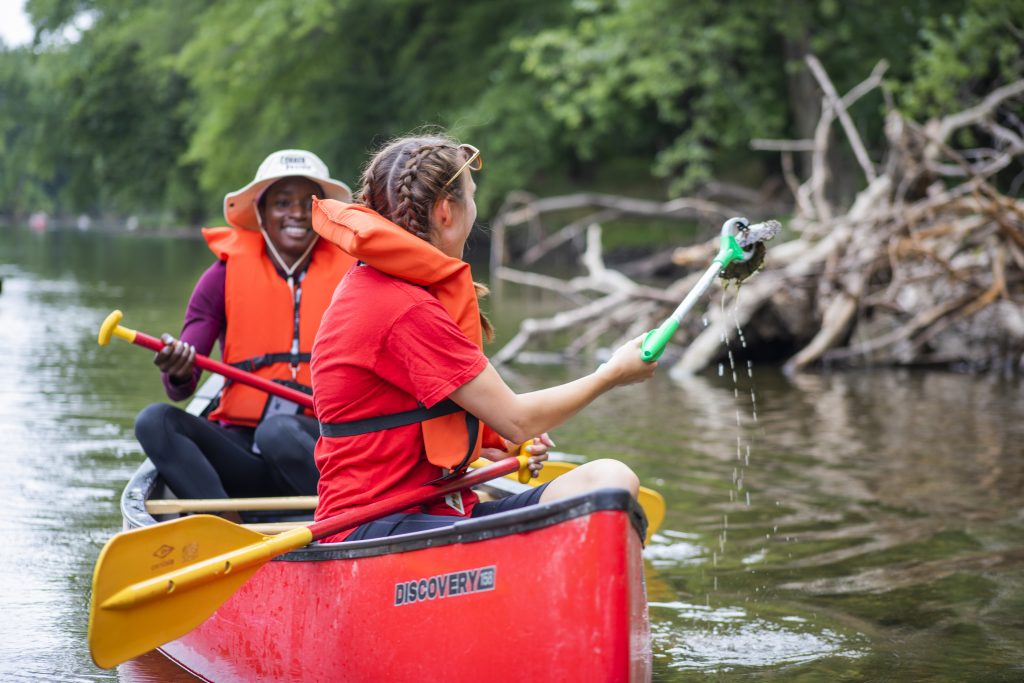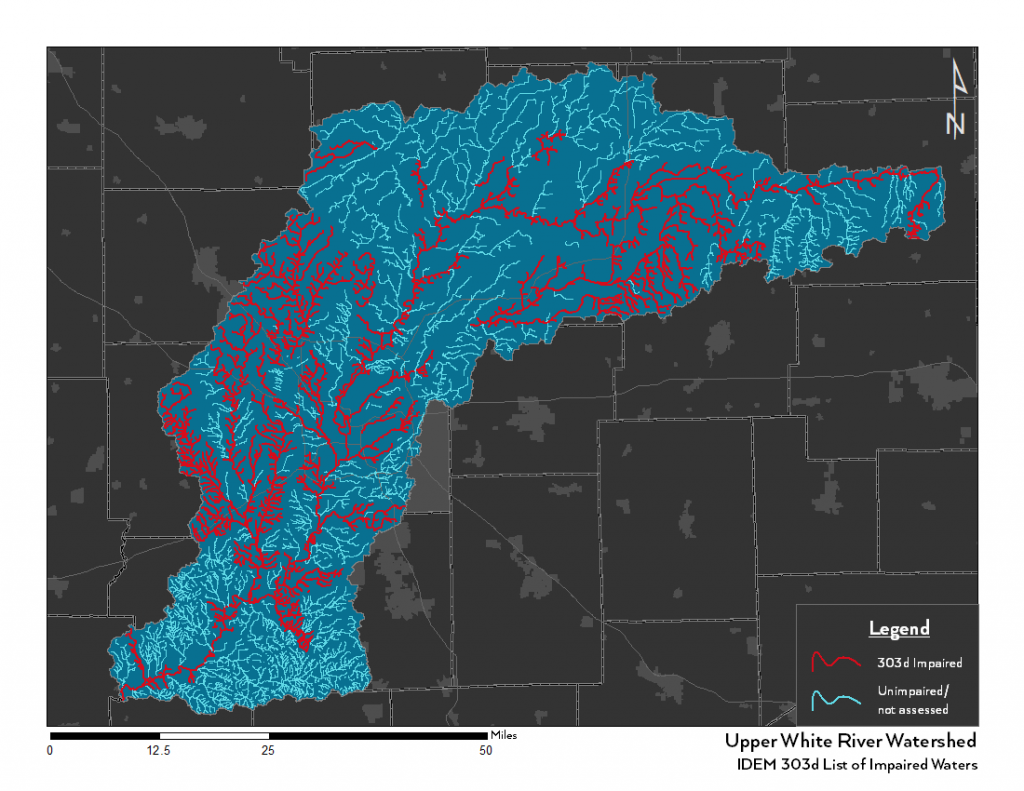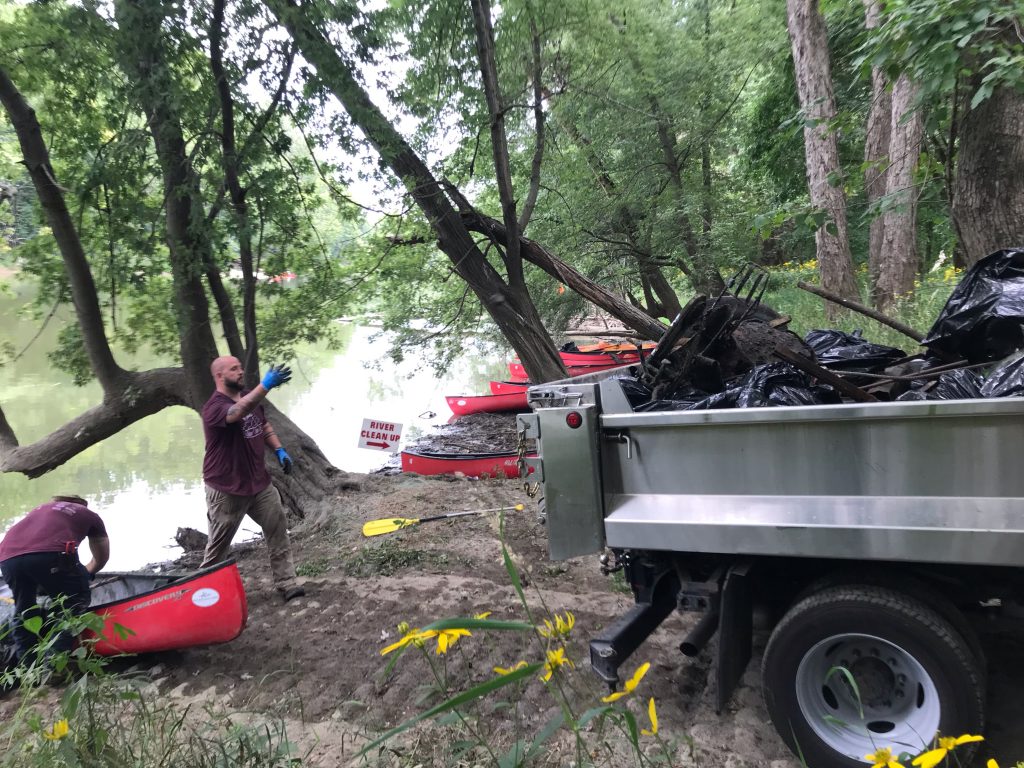Organize a Cleanup

Adopting a stream means you take regular actions to make and keep it clean.
Make your stream clean-up a big deal! Gather your friends, family, and neighbors, and make a conscious effort to clean up a segment of a stream near you on a regular basis. This can be weekly, monthly, or seasonally—whatever fits your schedule. Just keep it consistent to avoid a build-up of trash in your stream. Follow our step-by-step guide below to make sure you have a safe and fun stream cleanup!
Step 1: Staying Safe
First, make sure to wear gloves, and take safety precautions like not entering the stream after a heavy rain or when the water is flowing too fast. You can use the USGS Water Watch feature to see real-time streamflow of waterways in your state to help ensure conditions are safe. If you are cleaning along an impaired stream, avoid skin contact with the water, and consider only cleaning up along the stream bank, as that is where most trash sits anyways.
Under Section 303(d) of the Clean Water Act (CWA), states, territories, and authorized tribes are required to develop, and update every two years, lists of waters – rivers, lakes, coastal waters and estuaries – that are impaired (or threatened) by one or more pollutants. Impaired waters are waters that do not meet Water Quality Standards (WQSs) even after point sources of pollution have installed required levels of pollution controls. Below is a map of impaired streams in the Upper White River Watershed.

Step 2: Respecting Others' Property
When choosing an area to adopt, you will first need to determine whether the land is public or private. You may need permission or permits to host your cleanup. If it is unclear who owns or manages the land, call your county auditor or land title office.
Government agencies, like the National Forest Service, the Indiana Department of Natural Resources, State Parks, or local city, town, or country parks departments, often manage public land. When asking for permission to use the land, also consider asking these agency partners for donations of supplies, disposal services and/or publicity. When discussing the cleanup with private landowners, highlight the positives. Explain that you want to improve the environment and that your group will be respectful of the property.
Use the following suggested methods from ‘Budget Dumpster’ to get permission for your cleanup:
- Contact your local sheriff’s department for permits for cleanups taking place by boat.
- Contact your city or township’s permitting department if the sheriff’s department isn’t the appropriate contact.
- For cleanups on land, use your county plat map and/or records of deeds to find the owners of all properties you wish to clean up.
- Contact your city or township’s permitting department for any government-owned property you wish to clean up.
- Contact the owner of any private property with your plans for the cleanup. Make sure to get their permission in writing.
- Contact the owners of any business’s property you wish to cleanup. Be prepared for them to decline permission due to liability issues. If they permit your stream cleanup, consider asking them to participate or provide supplies.
- Ensure that all volunteers know of any areas that are off-limits due to declined permission.
Step 3: Trash Disposal
For smaller stream cleanups, trash bags should do the trick. Make sure to bag and tie-up all the trash and debris you collect, and dispose of it properly. For bigger stream cleanups where you plan to pick up tires, large metal scraps, and old furniture, notify your city about your cleanup, as they may work with you to collect the trash directly. If your city cannot provide trash pickup, contact a dumpster rental company. Ask about any potential discounts for volunteer cleanup events. Make a note of large, difficult to move items (appliances, car parts, etc.), and let local watershed groups or Keep America Beautiful groups/affiliates know in case they’re able to facilitate removal or help with supplies.

Natural Ways to Clean up Streams
Picking up litter is a great way to start cleaning up our waterways. The next step is to take inventory of the vegetation along the banks. Are the banks full of native plants or overgrown with invasive species or being mowed to the edge?
Invasive plants are problematic because they displace native plants, eliminate food and cover, and threaten rare plant and animal species. Learn more about Indiana invasive plants here. Not in Indiana? Your state’s department of natural resources can help you learn what invasive plants are present in your area.
Shoreline’s composed of native plants help restore natural conditions by buffering the water’s edge with dense plantings. This helps filter stormwater runoff and reduce pollution in our waterways, stabilize the shoreline itself, provide food and habitat to native wildlife, and even deter pesky waterfowl like geese. Visit our Native Plants and Pollinators page to learn more about using shoreline buffers to protect your stream. If your shoreline if mowed to the edge of the stream, a simple action that can garner many of these benefits can be as easy as letting it grow.
If your banks contain invasive species however, it might be appropriate to remove them and replant the area with native species. This is a powerful action and can be a large undertaking. Many conservation groups offer assistance with invasive plant removal, and State of Indiana Cooperative Invasives Management (SICIM) is a great place to start. You can also use a Clear Choices Local Campaign to organize a volunteer event.

Report a Polluter
If you see someone dumping pollutants of any type into a stream, lake, river, or floodplain, please report it to your local public works department or to the IDEM Complaint Coordinator. Pouring anything into waterways is not only bad for water quality and wildlife—it is illegal in most places. Visit this Indiana Department of Environmental Management webpage to learn more.